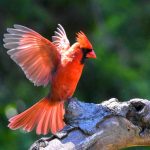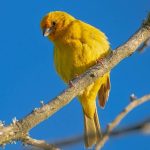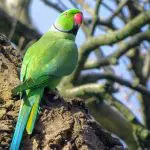The Hawaiian islands are home to a diverse range of bird species, including several with striking red or reddish heads. While these species may not be native to the islands, their vibrant colors and distinct markings make them stand out in Hawaii’s avian landscape. In this article, we will introduce you to eight red-headed birds found in Hawaii, and discuss why they made this list.
Red-Headed Birds in Hawaii
Some of the following species amazing amazingly bright red heads, others may just have partial red coloring or some red feathers.
1. Red-crested Cardinal
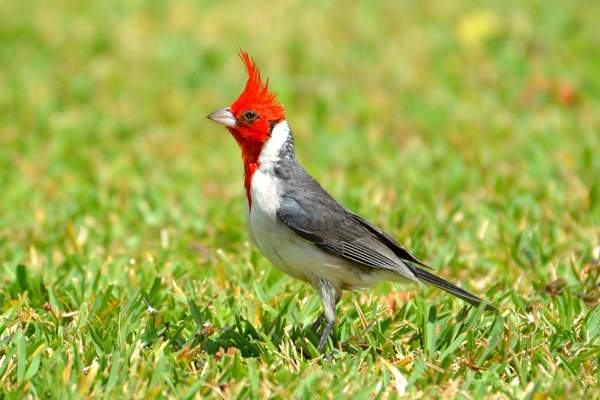
Scientific name: Paroaria coronata
The Red-crested Cardinal is a small, introduced species with a bright red head and prominent crest. Originally from South America, this bird has adapted well to life in Hawaii and is now a common sight in parks, gardens, and urban areas across the islands.
2. Northern Cardinal
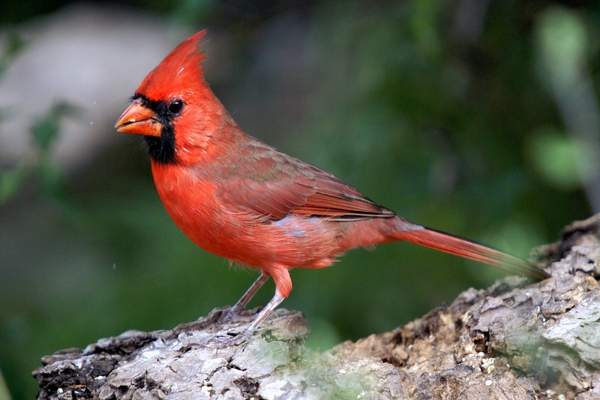
Scientific name: Cardinalis cardinalis
The Northern Cardinal is a rare vagrant to Hawaii, occasionally spotted in the islands as a result of migration from North America. The male of the species has a bright red head, crest, and body, while the female is a duller brownish-red color.
3. House Finch
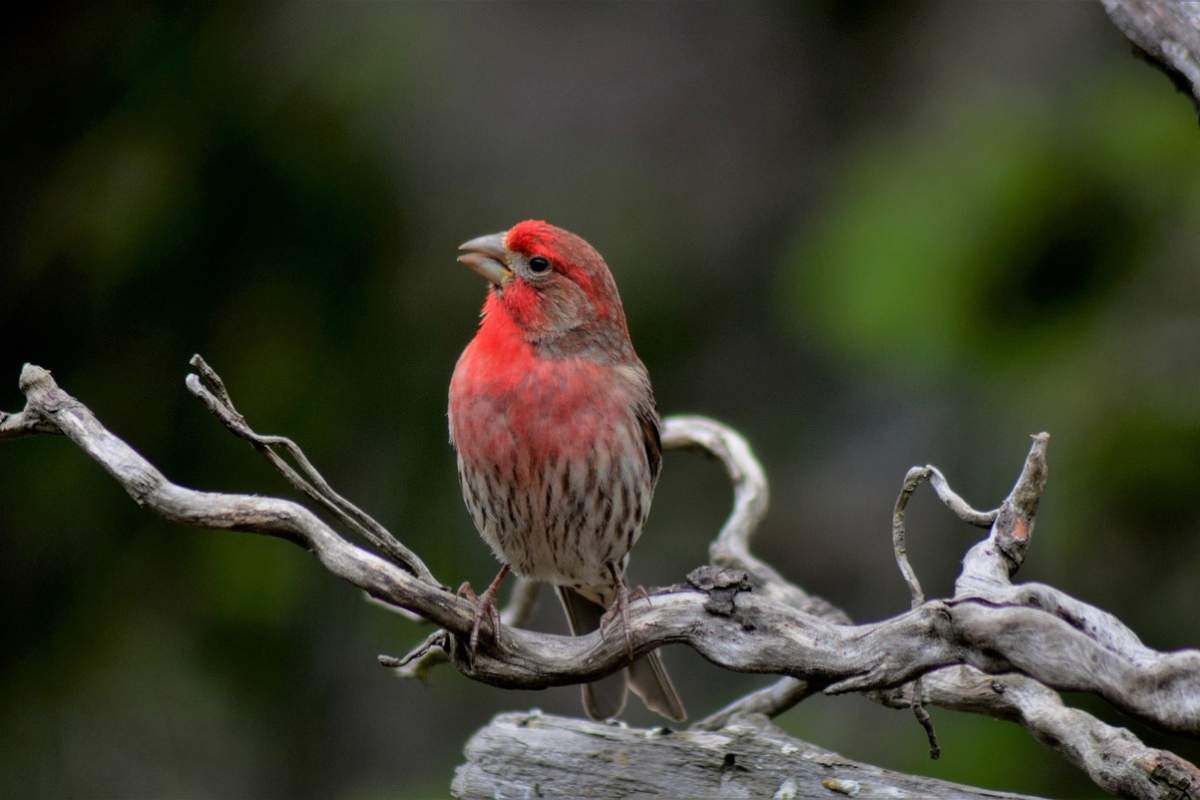
Scientific name: Haemorhous mexicanus
The House Finch is another introduced species that has become widespread across Hawaii. The male of the species has a red head, breast, and rump, while the female is a plain gray-brown color. These birds are commonly found in residential areas and feed on seeds, berries, and insects.
4. Red-masked Parakeet
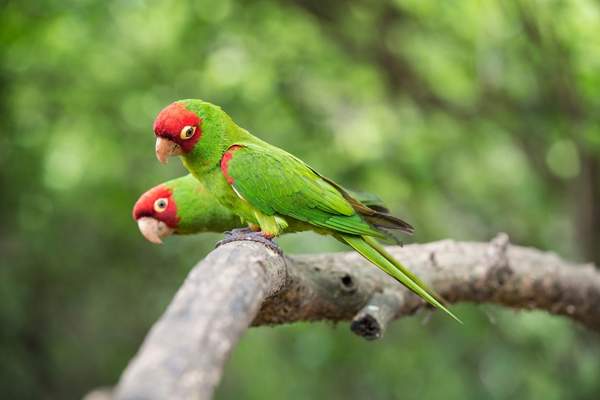
Scientific name: Aratinga erythrogenys
The Red-masked Parakeet is a small, introduced parrot species that has a bright red mask around its eyes, as well as red on its wings and tail. These birds are commonly found in urban areas and feed on fruits, nuts, and seeds.
5. Red-billed Leiothrix
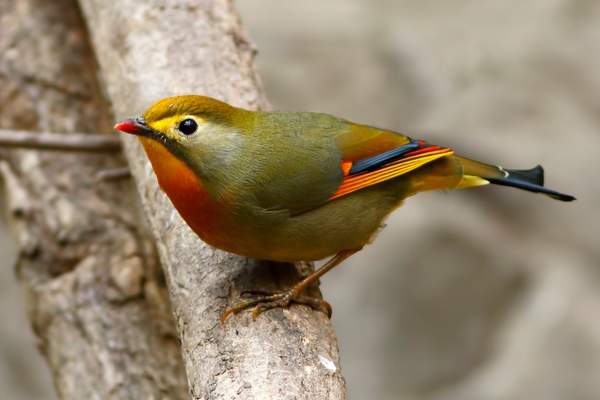
Scientific name: Leiothrix lutea
The Red-billed Leiothrix is a small, introduced songbird species that has a bright red bill and a small patch of red feathers on its forehead. Originally from the Himalayan region of Asia, this bird is now a common sight in gardens, parks, and forests across Hawaii.
6. Zebra Dove
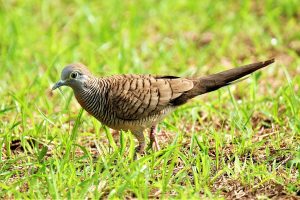
Scientific name: Geopelia striata
The Zebra Dove is an introduced species with a reddish-orange bill and eye-ring. These small doves are commonly found in residential areas and feed on seeds and insects.
7. Java Sparrow
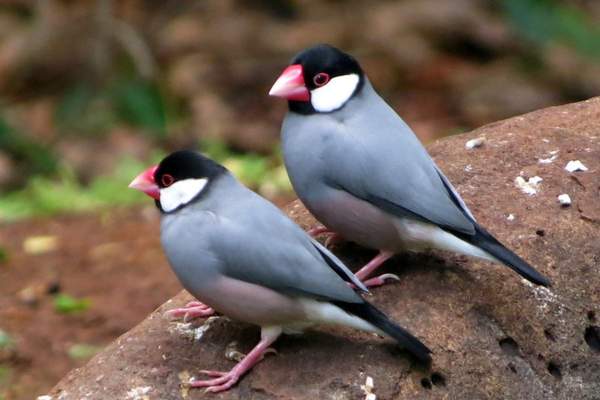
Scientific name: Lonchura oryzivora
The Java Sparrow is an introduced finch species with a reddish-orange head, bill, and eye-ring. Originally from Indonesia, these birds are now a common sight in gardens, parks, and residential areas across Hawaii.
8. Orange-cheeked Waxbill
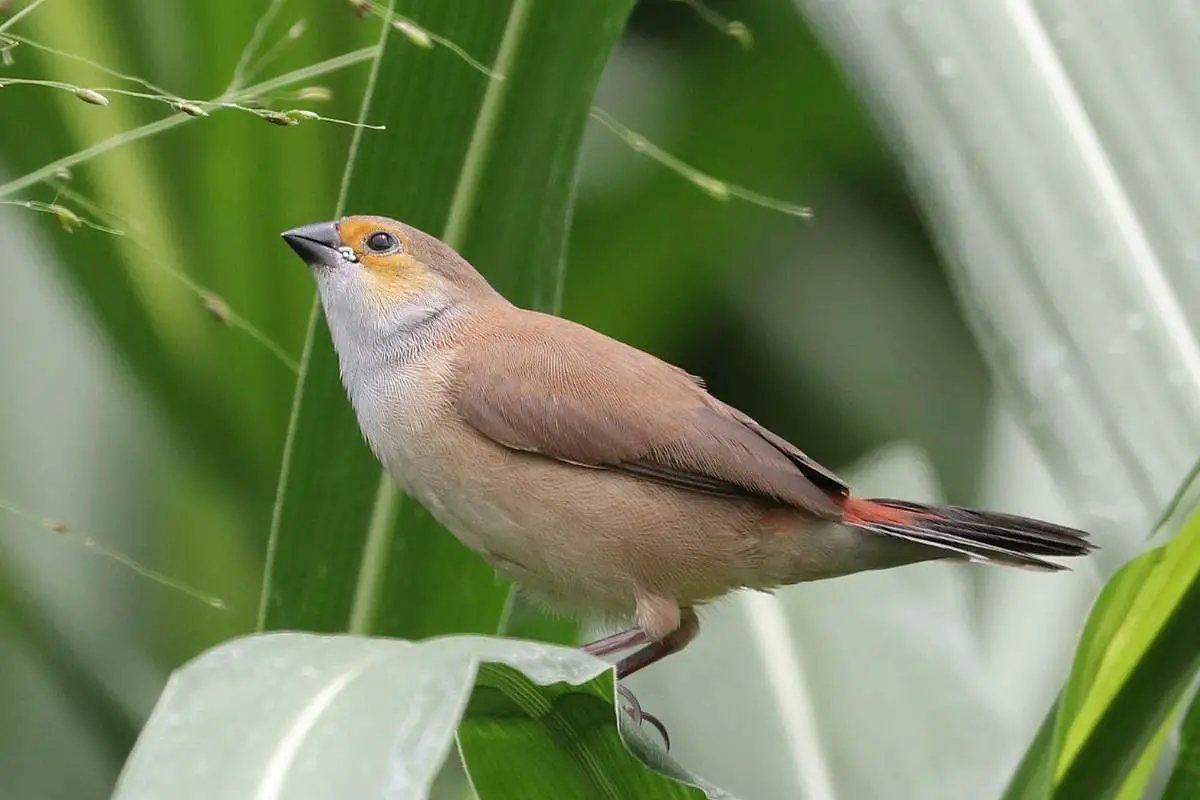
Scientific name: Estrilda melpoda
The Orange-cheeked Waxbill is a small, introduced finch species with a bright orange head and cheeks. These birds are commonly found in gardens and parks and feed on seeds and insects.
9. Yellow-billed cardinal
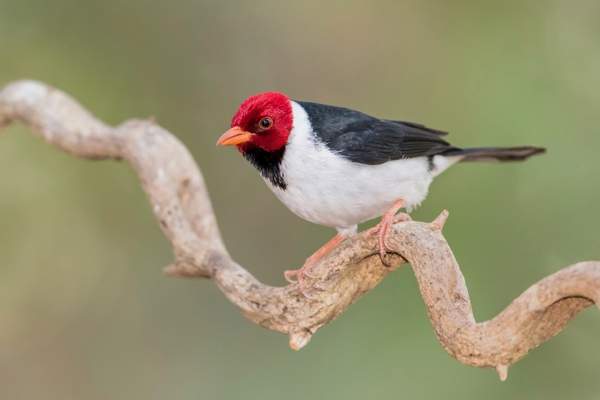
Scientific name: Paroaria capitata
The Yellow-billed Cardinal is a small passerine bird with a red head, yellow bill, and black mask around its eyes. Originally from South America, small populations of the species were introduced to the Big Island of Hawaii in the mid-20th century, likely as a result of the pet trade.
The species is known for its bright red head and overall gray plumage with white markings on its wings and tail. Yellow-billed Cardinals are typically found in open and semi-open habitats, and they are omnivorous. The exact population size of the species in Hawaii is not known, but it is considered a rare bird species on the island.
As an introduced species, the Yellow-billed Cardinal can have negative impacts on native ecosystems and species, and may contribute to the spread of diseases and parasites that could harm native bird populations.
Reasons why birds have red feathers
Birds come in a wide range of colors and patterns, with some of the most striking being those with red feathers. While the reasons for why some birds have red feathers are complex and varied, there are a few key factors that help explain this colorful trait.
- Presence of pigments called carotenoids in their feathers
- Consumption of fruits and berries that contain carotenoids in their diets
- Ability to produce their own carotenoids, giving them a more vibrant red coloring
- Sexual selection, where males have brighter and more colorful feathers than females
- Use of brightness and color of a male’s feathers as a signal of their genetic quality and ability to mate
- Attraction of mates through the brightness and color of their feathers
- Deterrence of predators through their bright coloring
- Communication with other birds through their bright coloring
Pigments
One of the primary reasons for why some birds have red feathers is due to the presence of pigments in their feathers. These pigments, called carotenoids, are found in the diets of many birds, especially those that consume fruits and berries.
When consumed, carotenoids are stored in the feathers and can give them a bright red or orange coloration. Some birds, such as the Northern Cardinal, have the ability to produce their own carotenoids, giving them a more vibrant red coloring.
Sexual Selection
Another reason for why some birds have red feathers is due to sexual selection. In many bird species, males have brighter and more colorful feathers than females.
This is because females use the brightness and color of a male’s feathers as a signal of their genetic quality and ability to mate. Males with brighter and more colorful feathers are seen as more attractive to females and are more likely to mate and pass on their genes. This has led to the evolution of bright red feathers in many bird species, such as the Red-crested Cardinal and the Vermilion Flycatcher.
More about Hawaii’s birds
Hawaii is known for its unique bird population, with many species found nowhere else in the world. However, with human arrival, the introduction of non-native species, and habitat destruction, Hawaii’s native bird populations have been under threat. Today, many of Hawaii’s native bird species are endangered or critically endangered, while introduced bird populations have flourished.
Hawaii’s Native Bird Population
Hawaii’s native bird population evolved in isolation and adapted to the unique ecosystems and environments found on the islands. Today, Hawaii’s native bird population faces numerous threats, including habitat destruction, climate change, disease, and the introduction of non-native predators.
Some statistics about Hawaii’s native bird population:
- Of the 113 bird species native to Hawaii, 95% are found nowhere else in the world.
- Over 30 native bird species have gone extinct since human arrival.
- Today, 33 native bird species are endangered or critically endangered, with some species having populations numbering in the hundreds or even the dozens.
Hawaii’s Introduced Bird Population
While some introduced bird species have had negative impacts on Hawaii’s ecosystems, others have adapted to fill ecological niches left empty by declining native species. Introduced bird species are now a common sight in Hawaii and include the Red-crested Cardinal, Japanese White-eye, and House Sparrow, among others.
Some statistics about Hawaii’s introduced bird population
- There are approximately 170 introduced bird species in Hawaii.
- Introduced bird species now make up around 30% of Hawaii’s total bird population.
Overall, Hawaii’s bird population is a complex mix of native and introduced species. Efforts are underway to protect and conserve native bird species through habitat restoration, predator control, and captive breeding programs. Meanwhile, the challenge of managing introduced bird species and their impact on Hawaii’s ecosystems continues to be a topic of ongoing research and debate.

